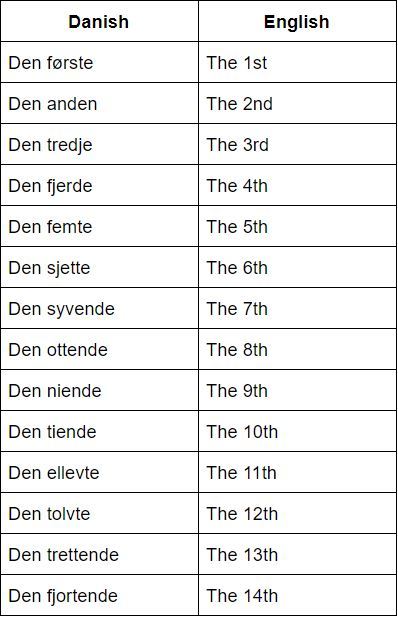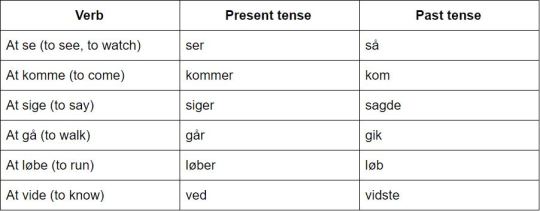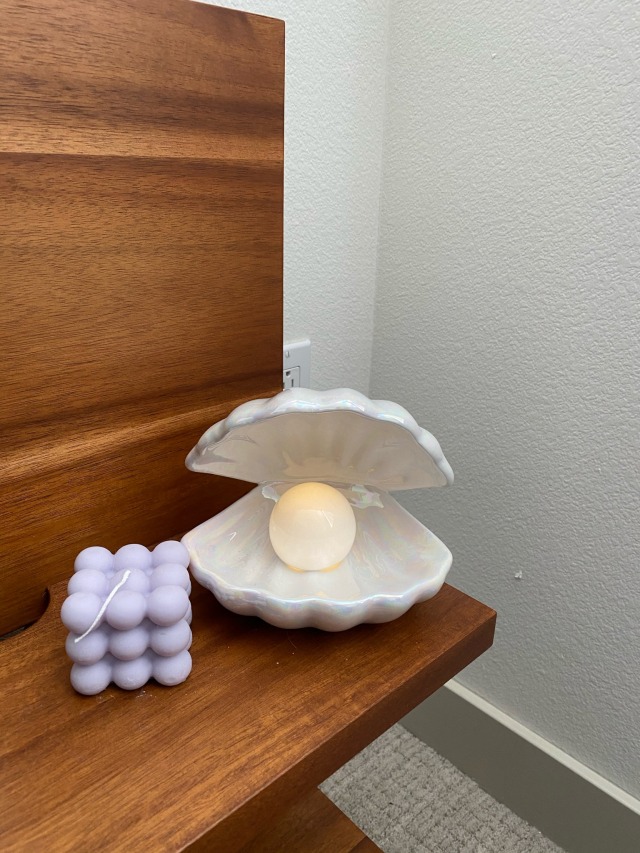#danish

Ein besonderes Bild für einen ganz bestimmten Keuschling… wer die Herrin zu Weihnachten so unverschämt gereizt hat, muss mit einer kleinen Verwarnung rechnen.
Viel Spaß für 2022.
Polish: Wszystkiego najlepszego!
Welsh: Penblwydd hapus!
icelandic: til hamingju með afmælið/til hamingju með daginn
Danish: Tillykke med fødselsdagen
Aspirated plosives
Aspirations occurs in English in initial onsets like in ‘pat’ [pʰæt], ‘tack’ [’tʰæk] or ‘cat’ [’kʰæt]. It is not phonemic, since it doesn’t distinguish meanings, but it’s distinctive in Mandarin e.g. 皮 [pʰi] (skin) vs. 比 [pi] (proportion).
Non-phonemic aspiration occurs in: Tamazight, English, German, Swedish, Norwegian, Kurdish, Persian, Uyghur.
Phonemic aspiration: Sami languages, Icelandic, Faroese, Danish, Mongol, Kalmyk, Georgian, Armenian, North Caucasian languages, Sino-Tibetan languages, Hmong-Mien languages, Austroasiatic languages, Hindi-Urdu, Punjabi, Marathi, Gujarati, Odya, Bengali, Nepali, Tai-Kadai languages, Nivkh, many Bantu languages (Swahili, Xhosa, Zulu, Venda, Tswana, Sesotho, Macua, Chichewa, and many Amerindian languages (Na-Dene, Siouan, Algic, Tshimshianic, Shastan, Mayan, Uto-Aztecan, Mixtec, Oto-Manguean, Quechua, Ayamara, Pilagá, Toba, etc.)
Post link
Check out this lesson at danishwithemi.com
Imagine being locked inside an empty room. Pretty boring, right? Not much to do. Now, imagine that the only thing in there with you is a textbook for language learning. A Danish textbook, perhaps. Now you have something to do! Something that can entertain you (at least until you get too bored and goes back to staring at those empty walls). With language learning as your only means of entertainment, you’d be a master in Danish in no time.

But that’s pretty unrealistic? you might think - and it is! This is an exaggerated example, but I think you get the idea, which is that:
By creating an environment with minimum distractions, you can focus on what’s important to you. Whether it being finishing art projects, working out, knitting, photographing, building a 1:1 scale lego-version of the death star, or, as this article is focusing on, learning a language.
If you are sitting in your room reading this I encourage you to take a look around. How many unfinished books, games or projects of any sort do you have lying around? Probably a lot. Unless you, unlike me, are super disciplined and finish anything you start - good job! Anyways, how many times have you been in the middle of doing something productive and suddenly your roommate sends you a funny video and now you find yourself on an one-hour YouTube binge. Or perhaps you thought to yourself “oh yeah, I should probably finish this soon… but look at this awesome new game I’d rather want to play!”. I know for a fact that this had happened to me a dozen of times. And to be honest, it can be stressful sometimes. So, how do we solve this issue?
With minimalism, of course.
But what is minimalism? you ask me.
Minimalism can be different for many people. For some, it’s about owning only bare essentials like Fumio Sasaki, the author of the book Goodbye Things. For others, it’s about living in a space with only things that makes you happy, or, as Marie Kondo would say it, things that “sparks joy!” And that could be less than a hundred things or more than a thousand things. Heck, for some people it’s only about being emotionally detached from material possessions.
Personally, I’ve been trying to minimize my possessions by selling and donating things that doesn’t make me happy and is just serving as clutter. I’ve also started being more mindful of what I’m buying. Asking myself questions like: do I really need it, what will I be using it for and do I own something similar that I need to take care of or put to use first? With this mindset, I’ve minimized the clutter that would otherwise stop me from focusing on what is important to me. It even helped me be more environmentally friendly! I have not perfected my surroundings, nor will I probably ever get there, but I am doing my best and it is helping me focus.
With this article, I encourage you to be more aware of what you are surrounding yourself with. Now, I’m not telling you to get rid of your things, but simply try and be more aware, which in turn will hopefully help you focus on your goals and stay on track with learning those tricky foreign words and grammar rules! Perhaps you too can adopt the word minimalism and make it your own.
If you are sold on the idea of implementing minimalism to your life, here’s a few tips on how to get started:
- Clean your room and put everything back to their designated spots.
- If some of your things have no designated spot, give them one.
- If you can’t give some of your things a designated spot, read the two next points on this list.
- Sell or donate things you haven’t touched in a long time.
- Sell or donate things you never used or never will use again.
Good luck and happy studying!
If you want to learn more about minimalism, here’s some material that had helped me:
(FYI these are not sponsored. Just my own humble opinion)
https://www.theminimalists.com/minimalism/ - Blogpost about “what is minimalism” by the Minimalists. This blog has a lot of helpful and inspiring blog posts.
https://www.reddit.com/r/minimalism/ - Reddit forum for minimalists and those interested in the topic. Contain lots of inspiration!
https://www.youtube.com/user/TheRealLeaf/videos - Youtube channel by Lefie who makes fun, sarcastic and important videos on minimalism and mindful living.
Goodbye Things by Fumio Sasaki (book/audiobook)
The Life-Changing Magic of Tidying Up by Marie Kondo (book/audiobook)
Check out this lesson at danishwithemi.com
Easter vocabulary
Basket = kurv
Bunny = kanin
Chick = kylling
Chocolate = chokolade
Easter = påske
Easter bunny = påskehare
Easter egg = påskeæg
Easter egg hunt = påskejagt
Easter monday = 2. påskedag (literally: second easter day)
Easter sunday = påskedag (literally: easter day)
Egg = æg
Good friday = langfredag
Hare = hare
Maundy thursday = skærtorsdag
Palm sunday = palmesøndag
Spring = forår
Easter traditions in Denmark
Besides the usually egg hunt and eating a lot of chocolate eggs there are a few other easter related traditions in Denmark.
Påskefrokost: Literally means “easter lunch”. It’s a social gathering where you celebrate easter with alcohol and lots of food. Usually celebrated with either your friends, family or co-workers. At a påskefrokost you eat a lot of different dishes. On the table you would usually see eggs, fish, bread, meat balls, dessert with lemon, etc. People will usually drink easter beer which is known as “påskebryg” in Danish.
Gækkebrev: A letter cut into a creative pattern (google it and you’ll see) with a small rhyme written inside. Instead of writing your name at the end of the letter (e.g. “yours sincerely, [name]” or “from [name]”) you replace your name with dots (e.g. “from …….”). It is now up to the receiver to guess who send it! If the receiver guesses who send the letter, the sender owes them an easter egg. If the receiver do not guess it, they owe the sender an easter egg.
If you have any questions or feedback feel free to submit a question/feedback at danishwithemi.tumblr.com/ask and I will answer as soon as possible.
Check out this lesson at danishwithemi.com
In this lesson we are going to learn how to tell time in Danish.
The 24-hour clock
In Denmark the 24-hour clock is used (which is referred to as the “military time” in the US). The 24-hour clock is divided into 24 hours, ranging from midnight at 00:00 to midnight at 24:00 (or rather 23:59, which is the last minute of the day before it changes to 00:00 again). The minutes stays the same (ranging from 0 to 59).
Let’s try and convert some 12-hour clock times into 24-hour clock times:
12:00 a.m. = 00:00
01:02 a.m. = 01:02
08:59 a.m. = 08:59
09:00 a.m. = 09:00
12:00 p.m. = 12:00
02:30 p.m. = 14:30
07:00 p.m. = 19:00
10:45 p.m. = 22:45
Keep in mind that the 24-hour clock system is used primarily in written language and on digital clocks like phones and computers. In spoken language it gets slightly different. Let’s look into how.
Spoken time
As I just mentioned, the 24-hour clock system is used in written language and digitally. If you see a physical clock (e.g. on people’s wristband or hanging on the wall) it is going to be the 12-hour clock system. The same applies for spoken Danish. If you asked someone what time it is and, let’s say the time is 02:00 p.m., they wouldn’t say “it’s 14 o'clock”. Instead, they would say “it’s 2 o’clock”.
Well, how would I know whether it’s a.m. or p.m. then? you might ask me, and my answer to that is: it’s all about context. You will most likely see that’s it’s bright outside and therefore it’s 02:00 p.m. and not a.m and vice versa. You MAY experience that someone would say “14” rather than “2”, because they would look directly at the digital clock and let you know what the time is digitally (AKA military time).
Half past
Let’s say that the time is 04:30 p.m. (16:30). In spoken English you would say “half past four”. In spoken Danish it’s different and, instead, you would say “halv fem”, which literally translates to “half five”. So, instead of talking about the 30 minutes as pastfour, in Danish you would talk about the 30 minutes as tofive. Let’s look at some examples:
01:30 a.m. (01:30): Den er halv to (2) = It’s half past one (1)
08:30 a.m. (08:30): Klokken er halv ni (9) = The time is half past eight (8)
04:30 p.m. (16:30): Klokken er halv fem (5) = The time is half past four (4)
07:30 p.m. (19:30): Den er halv otte (8) = It’s half past seven (7)
This way of thinking about the 30 minutes is of course different and will take some getting used to.
Quarter to/past
Unlike the tricky half hour system that we just learned about, the quarter minute system is the same in English and Danish. Phew! This means that it’s only a matter of translating. Let’s look at some examples:
02:15 a.m. (02:15): Klokken er kvart over to (2) = The time is quarter past two (2)
09:15 p.m. (21:15): Den er kvart over ni (9) = It’s quarter past nine (9)
02:45 a.m. (02:45): Klokken er kvart i tre (3) = The time is quarter to three (3)
09:45 p.m. (21:45): Den er kvart i ti (10) = It’s quarter to ten (10)
Minutes
We learned about the half hour and the quarters. What about the minutes? Essentially, it’s the same as in English and is just a matter of translating. However, since the half hour system is slightly different, so is the minutes close to the half hour (e.g. 25 and 35). Let’s look at some examples:
07:05 a.m. (07:05): Fem (5) minutter over syv (7) = Five (5) minutes past seven (7)
07:10 a.m. (07:10): Ti (10) minutter over syv (7) = Ten (10) minutes past seven (7)
07:17 a.m. (07:17): Sytten (17) minutter over syv (7) = Seventeen (17) minutes past seven (7)
07:20 a.m. (07:20): Tyve (20) minutter over syv (7) = Twenty (20) minutes past seven (7)
07:25 a.m. (07:25): Fem (5) minutter i halv otte (8) = Twenty five (25) minutes past seven (7) (note: it’s okay to directly translate and say “femogtyve minutter over syv” instead)
07:35 a.m. (07:35): Fem (5) minutter over halv otte (8) = Twenty five (25) minutes to eight (8) (note: it’s okay to directly translate and say “femogtyve minutter i otte” instead)
07:40 a.m. (07:40): Tyve (20) minutter i otte (8) = Twenty (20) minutes to eight (8)
07:43 a.m. (07:43): Sytten (17) minutter i otte (8) = Seventeen (17) minutes to eight (8)
07:55 a.m. (07:55): Fem (5) minutter i otte (8) = Five (5) minutes to eight (8)
Example sentences
Hvad er klokken? = What’s the time?
Undskyld, ved du hvad klokken er? = Excuse me, do you know what time it is?
Klokken er kvart i fem = The time is quarter to five
Den er syv minutter over syv = It’s seven minutes past seven
Vi mødes kvart over tre = We meet quarter past three
Timen starter klokken otte i morgen = The class starts at eight tomorrow
Hvornår kan du være der? = When can you be there?
Jeg kan være der klokken tolv = I can be there at twelve o’clock
Lesson summary
This lesson contained a lot of information, so let’s have a quick recap:
- In Denmark the 24-hour clock system is used, meaning that the clock ranges from 00:00 to 23:59 and is used in written language and digitally.
- In spoken language the 12-hour clock system is used (without a.m. and p.m.), which requires you to think about the context (e.g. whether it’s dark or bright outside).
- If the time is half past five (5:30) it translates to “halv seks” in Danish (literally “half six” in English). I.e. in Danish the half hour is to something and not past something.
- “Quarter past” translates to “kvart over” in Danish. Example: quarter past four (4) = kvart over fire (4).
- “Quarter to” translates to “kvart i” in Danish. Example: quarter to four (4) = kvart i fire (4).
- If the time is twenty five minutes past three (03:25), the time would be “fem minutter i halv fire” in Danish (literally “five minutes to half four” in English).
- If the time is twenty five minutes to four (03:35), the time would be “fem minutter over halv fire” in Danish (literally “five minutes past half four” in English).
If you have any questions or feedback feel free to submit a question/feedback at danishwithemi.tumblr.com/ask and I will answer as soon as possible.
Check out this lesson at danishwithemi.com
In this lesson we will learn about the days of the week, the dates of the month and the months. This lesson is mostly focused on vocabulary. Let’s start with the months:
Months
Notice how similar the months in Danish are to the months in English!

Weekdays
Now for the weekdays:

Fun fact: Some of the weekdays are named after the Norse Mythology in Danish. Here’s a list:
- Mandag - named after the word ‘måne’ which means ‘moon’ in English
- Tirsdag - named after the Norse god Tyr
- Onsdag - named after the Norse god Odin
- Torsdag - named after the Norse god Thor
- Fredag - named after the Norse goddess Frigg
- Lørdag - Derived from the Old Norse word laugardagr with laug meaning ‘bad’ (which translates to ‘shower’ in English) and dagr meaning ‘dag’ (which translates to ‘day’ in English). The day originally meant ‘badedag’ or ‘vaskedag’ (which literally translates to ‘washing day’ in English).
- Søndag - named after the word ‘sol’ which means ‘sun’ in English
Dates
In the following table, each date is written out in words in the Danish translation instead of a number.


The dates are not usually written out like in the table above. Instead it’s usually written with the number, followed by a dot, like in the following examples:
Den 25. februar
Den 1. januar
Example sentences
Min fødselsdag er den 3. august = My birthday is the 3rd of August
Skal vi mødes på mandag? = Should we meet on Monday?
Du har en aftale søndag den 12. maj = You have an agreement on Sunday the 12th of May
Oktober kommer før november = October comes before November
Den 24. december er det juleaften = December 24th is Christmas Eve
Det er nytårsaften den 31. december = It is New Year’s Eve on December 31st
Kan jeg booke en tid på torsdag? = Can I book an appointment on Thursday?
Jeg har ferie i Juli = I have a holiday in July
If you have any questions or feedback feel free to submit a question/feedback at danishwithemi.tumblr.com/ask and I will answer as soon as possible.
Check out this lesson at danishwithemi.com
In Danish we can differentiate between three different types of verbs: regular verbs (type 1), regular verbs (type 2) and irregular verbs. In this lesson we will look at the irregular verbs and how it conjugates in present and past tense. Remember that the conjugation of a verb is the same across all pronouns. If you missed the lesson on regular verbs of type 1 and 2 then click here: regular verbs 1,regular verbs 2
Some verbs does not follow the same rules as the regular verbs. Therefore, irregular verbs needs to be memorized. Don’t worry if you can’t remember these verbs for now! With practice and constant exposure to the Danish language (e.g. through reading) it should come eventually.
Irregular verbs

Most irregular verbs in present tense is conjugated the same way as regular verbs (with an “r” added at the end of the verb). However, this is not always the case (see the verb “at vide” in the table above), so be aware.
Example sentences
Jeg ser en film = I am watching a movie
De så fem episoder = They watched five episodes
Hvornår kommer du? = When are you coming? / When do you come?
Han siger ikke noget = He doesn’t say anything
Hvad sagde hun? = What did she say?
Jeg går en tur = I am going for a walk
De gik en tur om morgenen = They went for a walk in the morning
Hun løber tre gange om ugen = She runs three times a week
Du løb væk = You ran away
Ved du hvad klokken er? = Do you know what the time is?
Jeg ved det ikke = I don’t know
Jeg vidste det! = I knew it!
If you have any questions or feedback feel free to submit a question/feedback at danishwithemi.tumblr.com/ask and I will answer as soon as possible.
SOOOOOOO Steven’s Danish VA, in honor of the anniversary of this episode, here is the Danish version of “I’d rather be me with you“.
The Danish version of this song is actually quite different than the English one, being quite elaborate and I find it very impressive how they translated it! Not to mention how AMAZING the VA is for Steven!!
Here are the lyrics for it:
(Danish)
Hvis bare jeg var høj
Hvis bare jeg var klog
Hvis jeg bare kunne få dig til at tro
Hvor end du tag'r hen,
vil du være min ven
For evig og altid kun os to
Når vi er sammen er livet let som en leg
Jeg føler mig hel med dig
Hvor end vi tager hen, så har vi hinanden
Jeg føler mig tryg når vi er to
Og hvad der end sker, er jeg lige her
Når vi to er sammen er der ro
Og der findes ingen her i verden der er så unik som dig
Livet den er så meget mere værd med dig(English translation)
If only I was tall,
If only I was smart,
If only I could get you to believeWhere ever you go
you’ll be my friend
forever and always just us twoWhen we are together life is as easy as a game
I feel whole with youWherever we go, we’ll have each other
I feel safe when we are two
And whatever happens, I’m right here
When we are together there is peaceAnd there is no one in this world as unique as you
Life is so much more worth with youAlso Steven’s Danish VA’s name is Thomas Meilstrup
On this website you can read Grimms’ fairy tales in 18 different languages! (English, German, Italian, Spanish, French, Portuguese, Russian, Polish, Dutch, Danish, Romanian, Finnish, Vietnamese, Chinese, Japanese, Korean, Turkish and Hungarian)

Hallo! Må jeg tale med Lars? Hello! Could I speak to Lars?
Hvem taler jeg med? Who am I talking to?
Er Søren hjemme? Is Søren home?
Nummeret er optaget. The number is engaged.
Skal jeg bede Anna ringe (tilbage)? Shall I ask Anna to ring back?
Kan jeg give ham en besked? Can I give him a message?
Lige et øjeblick! Just a moment!
De/du har fået forkert nummer. You’ve got the wrong number.
Kunne jeg lige tale med Jørgen? Er han i nærheden? Could I just have a word with Jørgen? Is he there?
Nej, han er ikke kommet hjem endnu. No, he hasn’t come home yet.
Jeg ringere igen senere. I’ll ring again later.
Vintage Danish Pendants
Three Danish frosted glass pendant lamps.
more images @ theoryofsupply.com
Post link

this little light of mine



![Aspirated plosivesAspirations occurs in English in initial onsets like in ‘pat’ [pʰæt], ‘tack’ [’tʰæ Aspirated plosivesAspirations occurs in English in initial onsets like in ‘pat’ [pʰæt], ‘tack’ [’tʰæ](https://64.media.tumblr.com/336a13765fb031784e1593639b0bb427/49a2b1dfe50b20fa-60/s500x750/989e8050d39083e2ca55c99084db868956ce4409.png)










